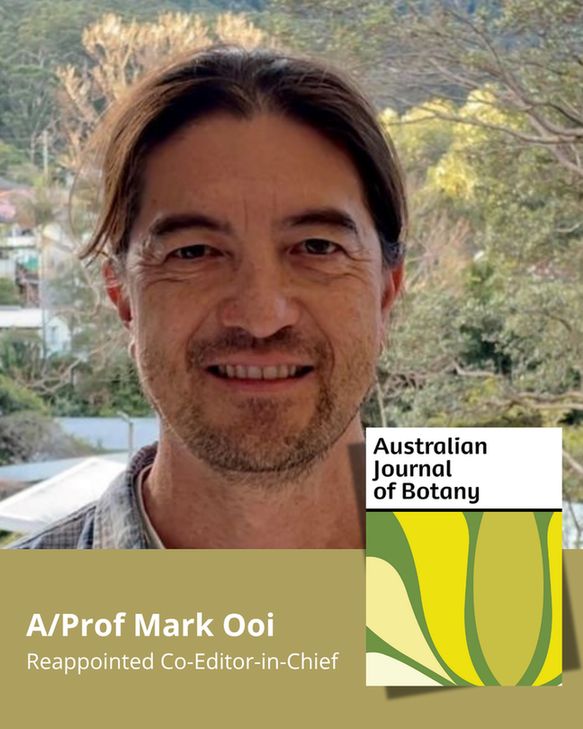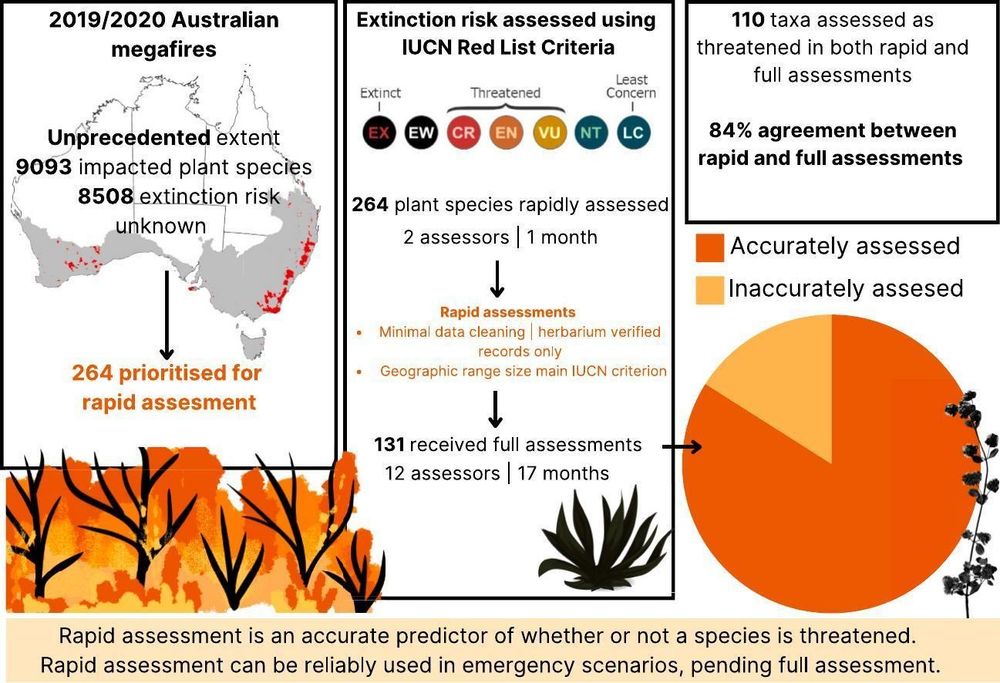
We looked at whether fatty acids (a common seed oil) changed composition across fire-prone and fire-free habitats + dormancy-breaking temperatures in physically dormant seeds! (1/2)
@markooiecol.bsky.social @ryantangney.bsky.social
doi.org/10.1093/aob/...
We looked at whether fatty acids (a common seed oil) changed composition across fire-prone and fire-free habitats + dormancy-breaking temperatures in physically dormant seeds! (1/2)
@markooiecol.bsky.social @ryantangney.bsky.social
doi.org/10.1093/aob/...
Open access paper 🔗 buff.ly/l3yG5Rt

Open access paper 🔗 buff.ly/l3yG5Rt
Paper here 🔗 buff.ly/Hi3BxLE

Paper here 🔗 buff.ly/Hi3BxLE
Read more 🔗 buff.ly/b4pbbgv

Read more 🔗 buff.ly/b4pbbgv
Researchers from institutions with agreements in place between their library and CSIRO Publishing can publish #OA in our journal without needing to pay Article Processing Charges (APCs).
Find your institution:
www.publish.csiro.au/journals/ope...
Researchers from institutions with agreements in place between their library and CSIRO Publishing can publish #OA in our journal without needing to pay Article Processing Charges (APCs).
Find your institution:
www.publish.csiro.au/journals/ope...


New research by Astorga et al. shows that some species survived the Last Glacial period locally, while others, like fire-adapted shrubs, arrived much later.
Read more in Australian Journal of Botany 🔗 doi.org/10.1071/BT24...

New research by Astorga et al. shows that some species survived the Last Glacial period locally, while others, like fire-adapted shrubs, arrived much later.
Read more in Australian Journal of Botany 🔗 doi.org/10.1071/BT24...
🔗Read more: buff.ly/CUN2V5V

🔗Read more: buff.ly/CUN2V5V

Their continued leadership ensures the journal remains at the forefront of botanical research in Australia and beyond 🌱 📖


Their continued leadership ensures the journal remains at the forefront of botanical research in Australia and beyond 🌱 📖


🔗⬇️

🔗⬇️
🔗 ⬇️

🔗 ⬇️
doi.org/10.1016/j.bi...

doi.org/10.1016/j.bi...
Cit sci data quality is a hot topic, and assumptions about ID accuracy are often made without evidence. We decided to test identification accuracy for a WA plants @inaturalist.bsky.social dataset

Cit sci data quality is a hot topic, and assumptions about ID accuracy are often made without evidence. We decided to test identification accuracy for a WA plants @inaturalist.bsky.social dataset




Aus J Botany: @ausjbotany.bsky.social 🌱
Aus J Chem: @ausjchem.bsky.social 🧪
Aus J Primary Health: @ausjph.bsky.social 🩺
Reproduction, Fertility & Development: @repfertdev.bsky.social 🥚
Wildlife Research: @wildliferesearchj.bsky.social 🐾

Aus J Botany: @ausjbotany.bsky.social 🌱
Aus J Chem: @ausjchem.bsky.social 🧪
Aus J Primary Health: @ausjph.bsky.social 🩺
Reproduction, Fertility & Development: @repfertdev.bsky.social 🥚
Wildlife Research: @wildliferesearchj.bsky.social 🐾
Associate Editors help manage the peer review process, uphold the journal's high publication ethics, and contribute to the publication of impactful zoological research.
Find out more: www.publish.csiro.au/zo/Expressio...

Associate Editors help manage the peer review process, uphold the journal's high publication ethics, and contribute to the publication of impactful zoological research.
Find out more: www.publish.csiro.au/zo/Expressio...

by José Rafael Ferrer-Paris, Ada Sánchez-Mercado, David Keith @willcornwell.bsky.social @markooiecol.bsky.social et al.
www.nature.com/articles/s41...

by José Rafael Ferrer-Paris, Ada Sánchez-Mercado, David Keith @willcornwell.bsky.social @markooiecol.bsky.social et al.
www.nature.com/articles/s41...


